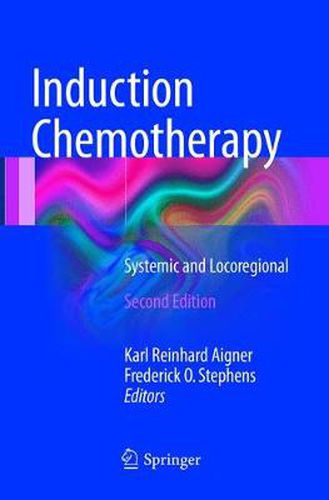Readings Newsletter
Become a Readings Member to make your shopping experience even easier.
Sign in or sign up for free!
You’re not far away from qualifying for FREE standard shipping within Australia
You’ve qualified for FREE standard shipping within Australia
The cart is loading…






This book presents the full range of management techniques and practices used in induction chemotherapy - both systemic and locoregional - by experienced international groups within one accessible volume. It provides the latest information on the pioneering and cutting-edge practices employed in different institutions and documents the advantages of integrated treatment schedules. All those responsible for treating patients with locally advanced cancers may find new, interesting aspects of locoregional cancer management and will find this book to be an invaluable source of up-to-date information.
Throughout the world, induction chemotherapy is being used as part of an integrated plan of management for locally advanced, solid tumors, while systemic chemotherapy is most commonly used to shrink primarily non-operable tumors. In cases of poorly or nonresponsive tumors, attempts have been made to administer chemotherapeutics via the arterial route in order to achieve higher localized drug exposure and response rates. Such therapies are being practiced worldwide in independent, remote departments in universities, teaching hospitals and clinical schools. Frequently, however, these teams remain relatively unaware of the work being done in other institutions, which may slow further progress.
$9.00 standard shipping within Australia
FREE standard shipping within Australia for orders over $100.00
Express & International shipping calculated at checkout
This book presents the full range of management techniques and practices used in induction chemotherapy - both systemic and locoregional - by experienced international groups within one accessible volume. It provides the latest information on the pioneering and cutting-edge practices employed in different institutions and documents the advantages of integrated treatment schedules. All those responsible for treating patients with locally advanced cancers may find new, interesting aspects of locoregional cancer management and will find this book to be an invaluable source of up-to-date information.
Throughout the world, induction chemotherapy is being used as part of an integrated plan of management for locally advanced, solid tumors, while systemic chemotherapy is most commonly used to shrink primarily non-operable tumors. In cases of poorly or nonresponsive tumors, attempts have been made to administer chemotherapeutics via the arterial route in order to achieve higher localized drug exposure and response rates. Such therapies are being practiced worldwide in independent, remote departments in universities, teaching hospitals and clinical schools. Frequently, however, these teams remain relatively unaware of the work being done in other institutions, which may slow further progress.